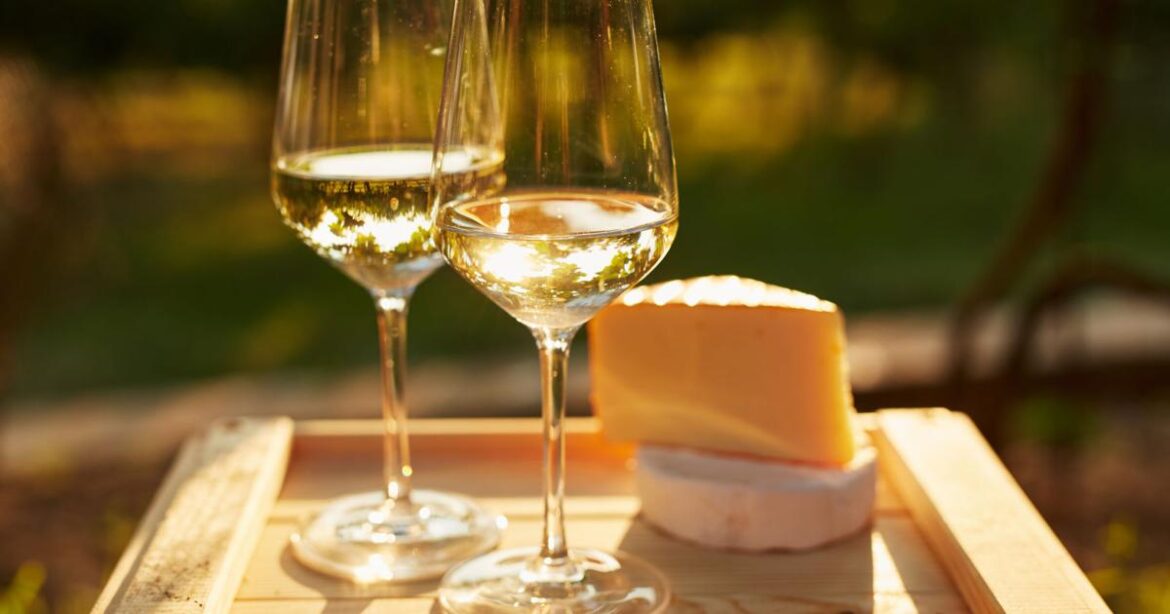I haven’t done in-depth research, but I feel comfortable in asserting that the diversity of wine grapes in Mediterranean countries is the most extensive on the planet. This column focuses on indigenous white wines, which, in general, offer crisp, refreshing drinking.
As it turns out, I had an over-representation of Italian wines in my recent tastings, though each deserves your attention. Most consumers probably know Soave but don’t recognize garganega, its primary grape. This Veneto wine is recommendable in its own right, but I also like this contemporary interpretation, the 2017 Scaia Garganega-Chardonnay ($13), quite aromatic, with brisk tropical fruit and a lush texture.
The ancient verdicchio variety is the signature white grape of the Marche region. The best ones tend to carry the Verdicchio Dei Castelli Di Jesi Classico Superiore designation and typically feature brisk apple and citrus, with stony notes. Garofoli, one of the more respected producers and the oldest family-owned winery in the region, produces the fresh, elegant 2018 “Macrina” ($14) and more intense 2016 “Podium” ($26), a special selection from a single vineyard.
In Abruzzo, the most common white grape is trebbiano. The 2017 Citra ($10) is a good introduction and an amazing value considering it is estate-grown and bottled. And I was impressed with two wines from pecorino, an old variety once thought to be extinct. Its wines typically are high-acid, high-alcohol, but fresh and easygoing, as seen with the luscious palate and pleasant citrus of the 2017 Ferzo ($26) and the organically and biodynamically farmed 2017 La Valentina ($16).
Sicily’s indigenous grapes also are generating interest. The Tasca family has been at the forefront of promoting many of them. One such grape is catarratto, which the Tascas have shown can impress with the full and deeply citrusy 2017 Regaleali “Antisa” ($20). The family also promotes the Mount Etna province with carricante, which has been described as Etna’s best white variety. The 2017 Tascante “Buonora” ($21) shows signature mineral and saline character balanced with crisp apple.
Nearby Greece has seen a modern renaissance in winemaking even as it rediscovers ancient grape varieties. Cultivated mainly in the Peloponnese, this pink-skinned moschofilero variety is used for white, rosé and sparkling wines. It produces light, fresh wines with notes of lychee and lemon, such as the 2016 Boutari ($15). The Domaine Skouras 2016 Salto “Wild Yeast” ($19), labeled “Moscofilero”, is quite crisp and tart with citrus and a touch of tropical fruit.
Found in central Greece and Macedonia, malagouzia almost became extinct but has been resurrected. The 2016 Alpha Estate ($15) is emblematic of the variety’s highly expressive tropical and stone fruit and fresh herb notes, with a full yet vibrant texture.
Finally, a couple of representatives from Spain and France. From Bierzo comes the 2016 Godelia Godello ($17), which reveals the godello-doña blanca grape’s ability to produce concentrated, mineral-driven whites. The 2015 Pagos del Galir ($19) from the nearby Galicia region satisfies with citrus and a savory note.
From the Côtes du Rhone, the 2017 Les Dauphins Blanc ($11) marries honeyed aromas and fresh fruit. Typical of Southern Rhône whites, it is a blend, in this case of mostly grenache blanc, with marsanne, clairette and viognier.

